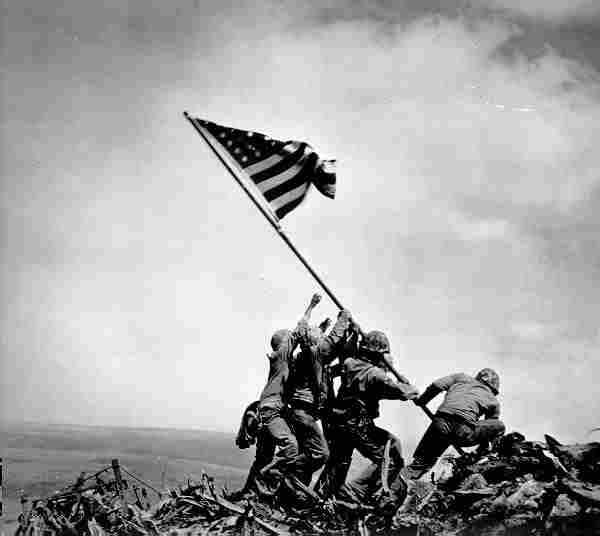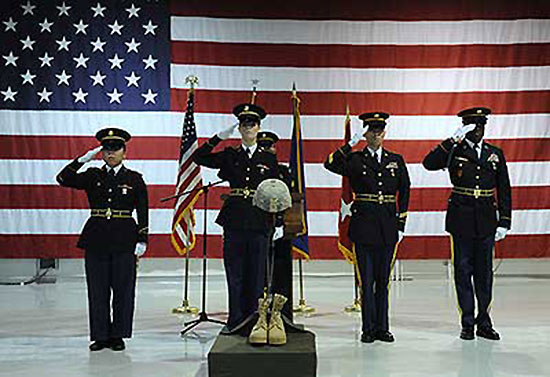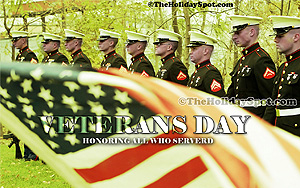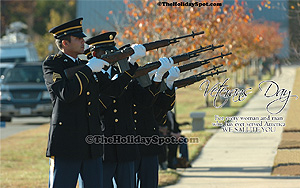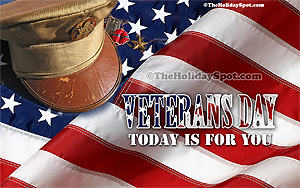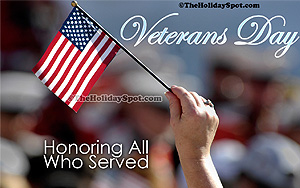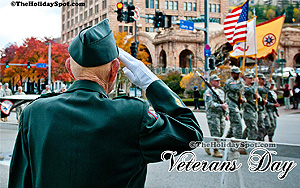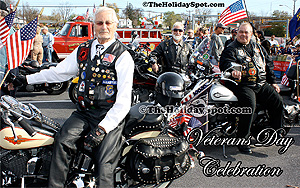History
When the Treaty of Versailles was signed on June 28th, 1919, in the Palace of Versailles on the outskirts of the town of Versailles, France, the First World War, also known at the time as "The Great War" officially ceased. However, fighting ceased seven months prior to this when a temporary cessation of hostilities or armistice, between Germany and the Allied nations went into effect on the eleventh hour of the eleventh day of the eleventh month. This is the reason, November 11th, 1918, is generally considered as the end of the war which ended all wars.
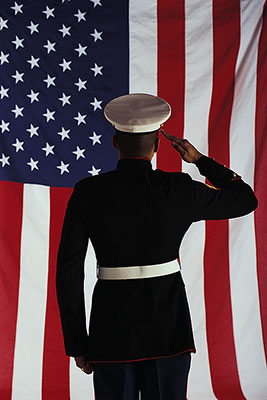
President Wilson proclaimed 11th November as the first commemoration of Armistice Day in November 1919 with the following words: "To us in America, the ruminations of Armistice Day will be filled with pensive pride in the heroism of those who fell serving the country and with gratitude of victory, both because of the thing from which it has freed us and because of the chance it has given America to express her sympathy with justice and peace in the councils of the nations."
The prime concept for the celebration was for a day observed with public meetings and parades and a brief adjournment of business starting at 11:00 a.m.
November 11th 1918 marked the conclusion of the most sanguinary, destructive, and far reaching war in human archives and the resurgence by the people of the United States of peaceful relations with other nations, which we sincerely hope can never be broken again.
However, it is fitting that the iterating anniversary of this date should be commemorated with thanksgiving and exercises and prayer designed to propagate peace through mutual understanding and good will between nations. The legislatures of twenty-seven States have already declared November 11th to be an official holiday Thus it is resolved by the Senate, i.e., the House of Representatives acceding, that the President of the United States is supposed to issue a statement calling upon the officials to put up the flag representing the United States on every Government building on the 11th of November and requiring the people of the United States to observe the day in churches and schools, or other relevant places, with proper ceremonies of friendly relations with all other people.
An Act approved on 13th May, 1938, made the 11th of November in each year an official holiday - a day to be devoted to the cause of world peace and to be henceforth known and celebrated as "Armistice Day." Armistice Day was basically a day set aside to commemorate veterans of the First World War, but after World War II, in 1954, had required the greatest mobilization of sailors, soldiers, airmen and Marines in the Nation's history; after American forces had battled disruption in Korea, the 83rd Congress, under the plead of the veterans service organizations, officially amended the Act of 1938 by cutting off the word "Armistice" and inserting in its place the word "Veterans." With the acceptance of this legislation (Public Law 380) on 1st June, 1954, 11th November became a day to respect American veterans of all wars.
On the 8th of October, that same year, the first "Veterans Day Proclamation" was issued by President Dwight D. Eisenhower .It stated: "To insure proper and widespread observance of this anniversary, the entire citizenry including all veteran and all the veterans' organizations will desire to join hands in the general purpose. For this reason, I am designating the Administrator of Veterans' Affairs as Chairman of a Veterans Day National Committee, which shall include persons selected by the Chairman, and which will coordinate at the national level necessary planning required for the observance. The heads of all departments and agencies of the Executive branch of the Government are also being requested by me to assist the National Committee in every possible way."
That same day, a letter was sent by President Eisenhower to the Honorable Harvey V. Higley, the Administrator of Veterans' Affairs (VA), in order to designate him as Chairman of the Veterans Day National Committee.
The VA's General Counsel was advised by the White House in 1958 that the designation given in 1954 to the VA Administrator as Chairman of the Veterans Day National Committee applied to all ensuing VA Administrators. Since March 1989 when VA had been elevated to a cabinet level department, the Secretary of Veterans Affairs has diligently served as the committee's chairman.
On June 28, 1968, the Uniform Holiday Bill (Public Law 90-363 (Stat. 250)) was signed in order to ensure three-day weekends for the Federal employees; and due to this they were able to celebrate four national holidays on Mondays: Veterans Day, Columbus Day, Washington's Birthday, and Memorial Day. These extended weekends, it was presumed, would encourage travel, recreational as well as cultural activities and would help to stimulate a greater industrial and commercial production. Many states however did not comply with this decision and continued to celebrate the holidays on the dates they were originally celebrating.
Under the new law, the first Veterans Day was observed amidst much confusion on the 25th of October, 1971. It was quite obvious that the solemnization of this day carried an immense historic and patriotic significance to a considerable number of our citizens, and thus on September 20th, 1975, the Public Law 94-97 (89 Stat. 479), which was duly was signed by President Gerald R. Ford by which the annual observance of Vetera ns Day was resumed to its original date of the 11th of November in the year 1978. This action was in accordance with t he desires of the breathtaking majority of state legislatures, the common people of America and all the major veterans service organizations.
Since then the Veterans Day has been continued to be solemnized on the 11th of November, not taking into consideration which day of the week it falls on. The observance of Veterans Day being restored to the 11th of November, has helped to preserve not only the historical significance of the date, but also to comprehend the importance of the purpose of Veterans Day which is a celebration to honor the veterans of America for the patriotism they have exhibited time and again, their immense love for their country, and the willingness they portrayed to serve and sacrifice for the common good.
The Congress passed a resolution, in 1926, after the end of World War I for an annual observance, and since then the 11th of November is considered a national holiday beginning in the year 1938. However Veterans Day should not be under any circumstances confused with Memorial Day-- although it is a common misconception. According to the Department of Veterans Affairs, of the U.S, the American service members who died while serving their country or as after being injured during a battle, are paid tribute to on the Memorial Day (the fourth Monday in May), whereas the Veterans Day pays respect to all the American veterans--whether living or dead-- however the living veterans who have served their country honorably and selflessly during war or peacetime are specially given thanks to.
A lot of Americans inaccurately believe that the Veterans Day is the day America has especially set aside to pay reverence to the military personnel, who perished in the battle or succumbed to wounds inflicted while fighting for the country, although it is untrue. The day set aside to pay homage to the brave hearts who have laid down their lives fighting for their country, America, is the Memorial Day.
In fact, Veterans Day is the occasion where LIVING veterans can be thanked in a large way for the dedicated and loyal service they have put forward for the benefit of our country. So, each year November 11th is the day when the veterans know that they are highly and heartily appreciated for the immense sacrifices they have made in their lives to keep our country happy and free.



